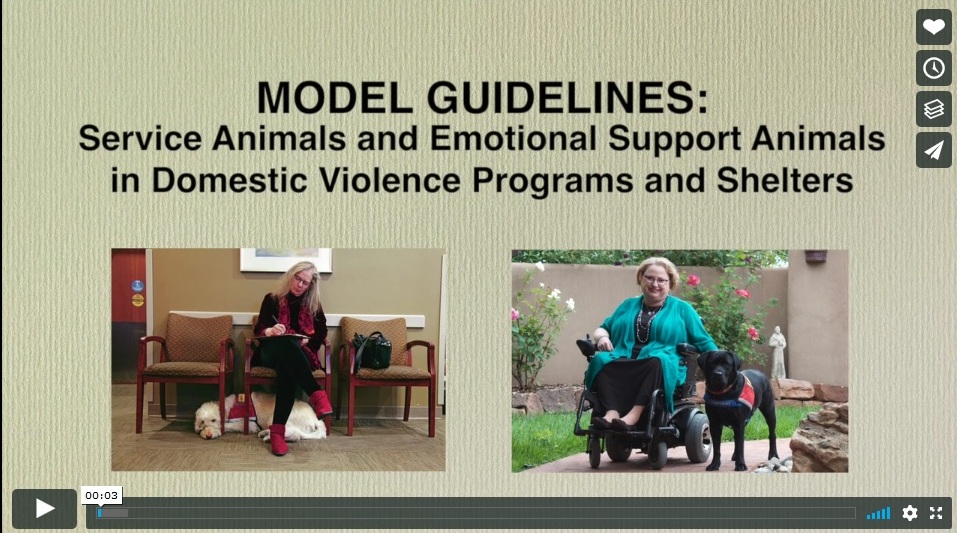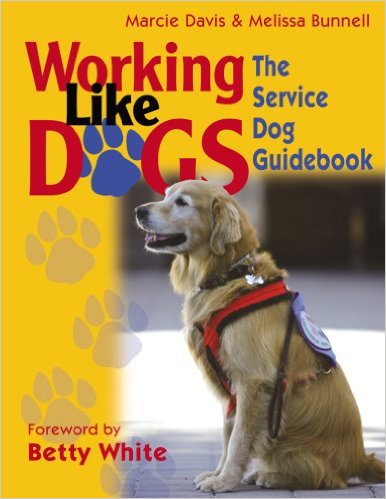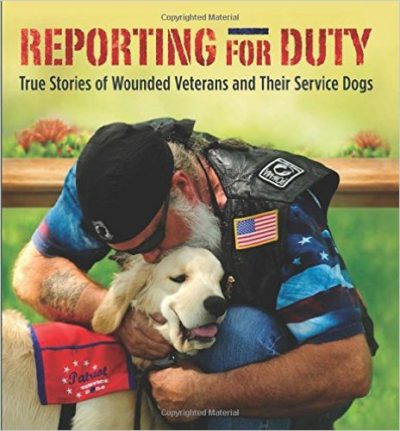Lovey and I had the awesome opportunity to recently serve on a working group led by the New Mexico Coalition Against Domestic Violence and Assistance Dogs of the West. Our task was to create a Model Guideline for Service Animals and Emotional Support Animals in Domestic Violence Programs and Shelters for New Mexico. We wanted to share this Guideline and accompanying video with you in case you might be interested in developing something similar for your state or local organization.
The guideline we developed was based on Washington state’s policy. It provides practical information to domestic violence direct service providers about service and support animals, but it can also be used as guidance for any program or business that is open to the public.
The Guideline provides in-depth information about the differences between service animals, emotional support animals, therapy animals, and pets. It discusses the laws in the United States that apply to these animals including the Fair Housing Act. It also provides policy suggestions and supporting documents such as sample documentation information for emotional support animals, a questions and answers section, and Quick Tips and Flow Chart that make it a user-friendly guide.
The guideline doesn’t shy away from the fact that currently there is no official certification program for service animals in the United States and it clearly communicates the only two questions that you can legally ask:
1. “Is that a service animal required for disability?” and
2. “What work or task(s) does it perform for you?”
That’s it! According to the federal Americans with Disabilities Act and the New Mexico Service Animal Act of 2013, as well as the Fair Housing Act, we cannot ask any other questions about the person’s disability, and we cannot ask to see the dog demonstrate a task.
I especially appreciate how the guideline poses the question, “How do I find out if an animal is really a service animal?” And the response is, “The easy answer: It is good advocacy practice to believe survivors when they tell you the animal is a service animal. Not only do you not need documentation, in fact, there is no documentation required…” It is so refreshing to see this unassuming approach about how to talk with someone about their service animal. And, it goes even further by providing suggestions on how to respectfully respond when someone tries to bring in a dog or animal that isn’t appropriate for public access.
You can download this helpful guide and view the accompanying video below. Big shout out to our good friends, Denise Dumesnil from Assistance Dogs of the West and Shana Aldahl from the NMCADV, for their leadership and enthusiasm in creating this worthwhile project! And, you can listen in as Lovey and I chat with Denise and Shana about this project on Episode 143 of Working Like Dogs on Pet Life Radio.

Denise Dumesnil from Assistance Dogs of the West and Shana Aldahl from the NMCADV
We would love to hear your thoughts about the Guideline and if you may be working or have worked on something similar in your community. Let us know what you’re thinking or about your experiences!
MODEL GUIDELINES: Service Animals and Emotional Support Animals in Domestic Violence Programs and Shelters
Service Animals and Emotional Support Animals in Domestic Violence Programs and Shelters from NMCADV on Vimeo.






